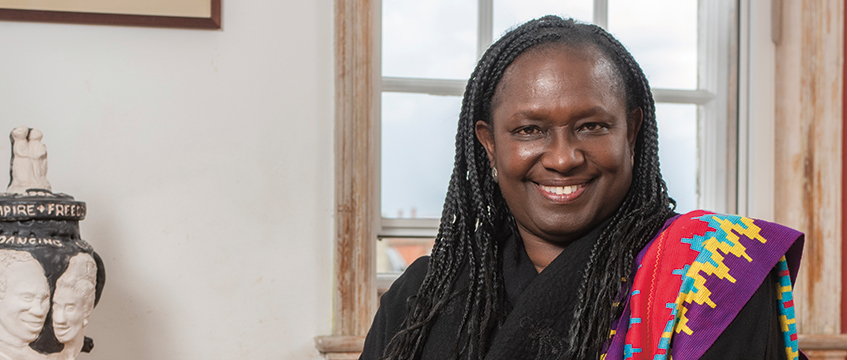For Ghana-born British architect Elsie Owusu OBE, the impact of the climate crisis on Africa feels personal.
The daughter of a diplomat posted to London in the early 1960s, Owusu trained at the Architectural Association and went on to become a partner at Fielden+Mawson before setting up her own practice.
She now splits her time between continents: one with a disproportionate influence over architecture and development around the world; the other disproportionately vulnerable to the impacts of climate change.
In Ghana itself, around 45,000 people are affected by flooding every year, according to the World Bank. Half of the coastline is vulnerable to erosion and flooding because of sea-level rise. Yet Ghana’s carbon emissions on a per capita basis are just 24% of the global average.
“The effects are very pronounced” says Owusu. “And if we say, ‘let’s pull the M&S building down because we feel like it’, the effects are manifold.”
Part of the problem
It is not just the carbon costs of demolition and new build but the influence that has on how the rest of the world develops the built environment.
Indeed, UK architecture is a global success story worth more than £4bn a year, according to RIBA.
Owusu sees her own profession as part of the problem – but also sees a “real opportunity” for architects to lead a multidisciplinary approach to doing things differently.
She recently explored the growth of retrofit for an episode of BBC Radio 4’s Costing the Earth series entitled Rip it up and start again?.
“I don’t think there can ever be one solution in architecture,” she says. “I don’t think we’ll get to a point where people aren’t allowed to build new buildings, but I don’t think we should be tearing down old buildings for the sake of it either.”
Her own work has encompassed both: she was lead architect for arts and interiors on the renovation of Middlesex Guildhall to create the Supreme Court and was also responsible for the masterplan for Green Park station.
Once a candidate for the RIBA presidency, she is passionate about contemporary architecture and also completely unafraid of pointing the finger at male ego to help explain the profession’s bias towards building new.
“There’s a macho pride in building new buildings and making them as tall or as fat as possible, particularly in London,” she says. “Being seen on the London skyline makes your status and reputation – particularly if you can challenge views of St Paul’s.”
That macho culture “echoes down through the architectural profession,” she says, adding: “Developers have the same issue.”
By contrast, those who specialised in refurbishment were seen as second- or third-rate and those who called for change dismissed as eco-warriors.
“If you are doing big new buildings, your status tends to rise. You can look at the London skyline and say, there’s Renzo Piano – tick, there’s Norman Foster – tick, there’s Rafael Viñoly – tick. It’s almost like a game, but it’s not a game,” she says. “The culture of ‘tear it down and start again’ has real impact.”
Has that impact been wilfully ignored by the architectural profession?
“I think the carbon impact of development has been understood for a long time. Architects have said, ‘we must do something about this – but only after we’ve put up our own buildings’. It has only recently become an issue of international significance – largely thanks to the COP conferences,” she says.
And with it, retrofit has been propelled into the mainstream.
“There is an intense link between the historic conservation of buildings and the conservation of the earth and that is seen as important to the future of the planet,” Owusu says. “Retrofit used to be people toiling in the wilderness. Now it’s upgraded and it’s become fashionable, with a new King who has been going on about building conservation – what we now call retrofit – for years and who was dismissed. Now it’s being taken seriously.”
Diversity and transparency
She sees policy and legislation as crucial, but ineffective without a cultural shift. “That comes from diversity,” Owusu says. “There are different voices saying, ‘we do want to do things differently’. Covid has amplified that. People have been forced to hang fire and think. There’s no point in building huge numbers of offices if no one wants to work in them.”
The whole process of making towns and cities must change, she argues, and we must involve everyone – from children up – through education, social media and other channels.
“You might still build new, but you must go through a process. Where I would like to end up is that before people start tearing things down, you have a very easy carbon emissions review. There should be an easy-to-use tool.
“You don’t have to drag people through appeals and huge campaigns. It should be transparent – it should be easy even for school children to ask why a building is coming down.”
To send feedback, e-mail julia.cahill@eg.co.uk or tweet @EGJuliaC or @EGPropertyNews











